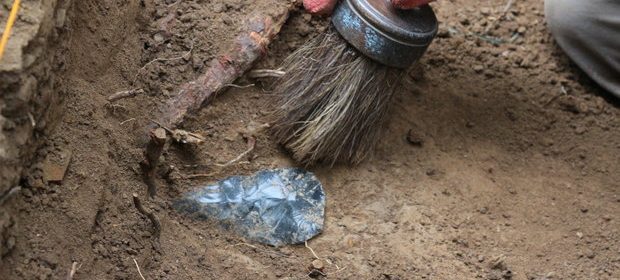Archaeologists find rare Native American artifacts in Willamette Valley

Archaeologists find rare Native American artifacts in Willamette Valley
Fifteen obsidian pieces found by the landowner of Willamette Valley were officially declared to be Native American artifacts – unusual bifaces, or prehistoric flaked stones on both side, believed to have been the first documented in Willamette Valley.

The Oregon Parks and Recreation Department has estimated that the collection of objects is between 1,000 and 4,000 years old. The exact location of the discovery has not been publicly identified.
According to Assistant State Archaeologist John Pouley at the Oregon State Historic Preservation Office, the bifaces found during are extremely rare types of archeological finds,

Pouley said in a telephone interview.”There are more than 35,000 recorded sites in Oregon so far, and there have been around 25 biface caches.”
The group of bifaces appear to be “blank trade” artifacts, meaning they’re mostly unfinished and unmodified from when they were first crafted by early Native Americans, Pouley said.
The roughly shaped obsidian has been determined to have come from obsidian cliffs in the Central Oregon Cascades.
Information about where the obsidian likely originated was actually provided by a machine that’s able to test the chemical composition of a rock.
“Different obsidian sources have very unique signatures to them,” Pouley said. “This obsidian artifact ended up being a long way away from the source.”
Pouley said the bifaces seemed to be in pre-trading condition, as ready-to-trade ones would have been worked into a finished tool such as a knife, spear or arrowhead.
“Unmodified trade items of any kind typically do not survive in the archaeological record,” Pouley said.
The artifacts were cached, or hidden in a concealed location. That means whoever hid them was likely planning to come back for them, especially since they were carried so far from their area of origin, Pouley said.
That in itself is what makes them so rare, he said. “The only artifacts like this that survive are the ones that the person stashed and for whatever reason couldn’t come back for them.”
The site where the artifacts were found is located in the traditional territory of the Santiam Band of the Kalapuya. But the Confederated Tribes of the Grand Ronde, the Confederated Tribes of the Siletz and the Confederated Tribes of the Warm Springs Reservation also were consulted to provide information about the land surrounding the area, and how the artifacts may have ended up in the valley.
Artifacts found on private land are the property of the landowners, but landowners often choose to donate what’s discovered to a museum or tribe. Pouley said he’s not sure whether the man who found the artifacts will donate them or keep them.
After the excavation and analyses are completed, Pouley said he will produce a professional archaeological report on his findings with the intent to have it later converted into a peer-reviewed publication.
He and others involved in the excavation also will share their findings with Abiqua Academy, a pre-kindergarten through 12th-grade independent school in Salem.
The landowner, who’s also a teacher, allowed his middle school students to observe a portion of the excavation as a field trip, Pouley said.
“He may choose to donate them to a museum, or a tribe, or he may keep them,” Pouley said.